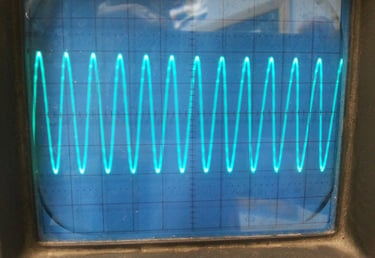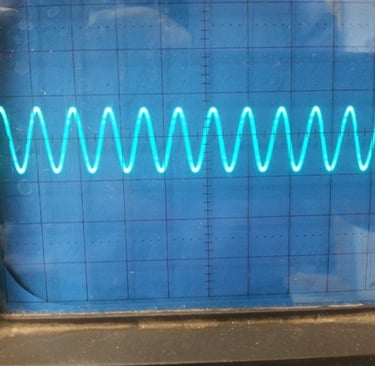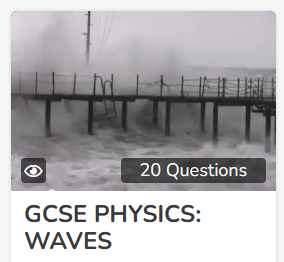
DESCRIBING WAVES!
Waves are all around us and come in all different shapes and sizes! Waves transfer energy from one place to another. Sound waves, light waves, radio waves, x-rays, gamma radiation and so many more. So how do we describe how these oscillating wonders behave? First up - what is the difference between a longitudinal wave and a transverse one? Can you also work out what is meant by frequency and amplitude? Time to investigate using this wonderful, retro simulation. Dive in and discover!
Try this wave based "Blooket" quiz to see what you already know about waves! Look at the whole of this page first to have a chance of doing really well. Or why not try our own wavey quiz by pressing the button? Or over over the key words to fins out their meaning!

WAVES ALL AROUND US
Waves transfer energy without transferring matter. They are the major method of energy transfer in the Universe and you have copious amounts of the oscillating wonders passing right through you, being absorbed by you and reflecting off you every second of your lives . So what types of waves are all around us? What use are waves to us? How are they dangerous and who actually cares? Inept science presenter Professor Ryan Fox travels the world to investigate. Essential physics knowledge!


WAVE AMPLITUDE EXPLAINED
How does the amplitude of a wave actually affect the behaviour of a wave? From deadly tsunamis to loud sounds and quite bright lights, join Professor Ryan Fox as he studies the wonderful science behind wave amplitude! It's an intense experience, trust us, and not everyone survives. Poor Bob, or was it Brian?



WAVE FREQUENCY EXPLAINED
What does frequency tell us about a wave? How does it effect wave behaviour and how is it connected to wavelength? You will be fascinated as you find out the answers to all these questions, possibly, here in this exciting video. But beware - The truth hertz. See what I did there? #illgetmycoat

PHET WAVE SIMULATOR
Experiment with water, light and sound waves with this wonderful Phet investigation. Gain a greater understanding of frequency, amplitude and wavelength. Truly comprehend the difference between transverse and longitudinal waves. Head over to their website to see all the other wonderful interactive science stuff they have.


Amplitude
KEY WORDS


Frequency

THE WAVE EQUATION
One of the most useful physics equations in the whole universe, especially when used with that universal constant - the speed of light in a vacuum! Cherish it! Love it! But most importantly - learn it and use it! The elegance of physics embodied in a single, simple equation. You can even use it on your holidays at the seaside to calculate the speed of water waves (#lifeistooshort).



Ready for that science quiz on waves yet? It's tricky, remember to have a calculator with you! Head over to "Blooket" and have a go. Or why not try our own quiz down below?
DESCRIBING WAVES QUIZ!
Let's do a quiz all about waves and things like amplitude and frequency and stuff and also using the wave equation! Like.....oh yes indeedy! Have a go.....
WAVE INTERFERENCE
Some more Advanced Physics hanging around here..... watch the space.... possibly.....









